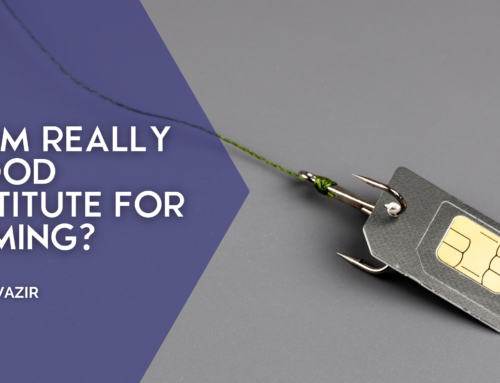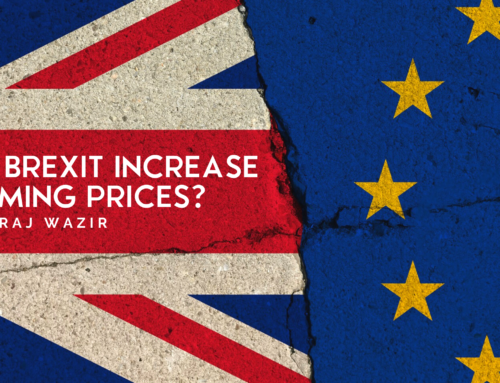Why 5G is a game changer for Wholesale Roaming teams
 By Dhiraj Wazir CEO of ROCCO Strategy
By Dhiraj Wazir CEO of ROCCO Strategy
While every marketing guru can easily spout wisdom about how the key to good marketing is Differentiation, probe a bit further and ask him how this applies to the wholesale market, and you’ll probably see him reach for the phone, and pretend to answer a call. Dig even deeper and ask him how to differentiate Wholesale International Roaming, the chances are he’ll run for the easiest Himalayan peak that his organic smoothie drinking body will allow, and become a hermit.
“Differentiated Wholesale”, is probably the most oxymoronic term that a nerdy roaming manager is capable of inventing. The industry has attempted various initiatives to move a commoditised market like Wholesale Roaming to a more differentiated value driven model; somewhat recently Global Roaming Quality being one of the bids to get MNO’s to differentiate roaming based on quality. However, commercial negotiators are thick skinned, and old habits die hard. You can put the very best roaming rockstars in a room and the conversation will soon come down to the basic haggling of price per MB and price per min. (it’s quite acceptable these days to treat SMS like an orphan from a Charles Dickens novel … (having said that, Oliver did get a home, not sure the future of SMS in the roaming world is looking so rosy … a topic however for another time).
Right from my earliest days in roaming, we tried to bring in the capability of price differentiation into wholesale charging. Standards allowed operators to charge GPRS data differently from 3G and then 4G in TAP, in fact this was not a given, but was born out of many a heated discussions at GSMA subgroup meetings. However at every single opportunity wholesale managers chose simplicity over differentiation (and rightly so). Data charging has remained bearer independent and Voice pricing has stayed destination agnostic (for most part).
 Now, today, here we are at the footsteps of Mt.5G, contemplating our ascent. The summit hidden by the mists of uncertainty and clouds of confusion. All we can see is a path, visible only a few yards (well a few feet if you are American) and then it’s all foggy, littered with rumours on Network Slices, each distinguished with the possibility of yet again differential charging. Why would we do this to ourselves? If history has shown us that we always embrace “Commoditised Simplicity” over differentiation, what is the whole point of charting such a complex route up the mountain?
Now, today, here we are at the footsteps of Mt.5G, contemplating our ascent. The summit hidden by the mists of uncertainty and clouds of confusion. All we can see is a path, visible only a few yards (well a few feet if you are American) and then it’s all foggy, littered with rumours on Network Slices, each distinguished with the possibility of yet again differential charging. Why would we do this to ourselves? If history has shown us that we always embrace “Commoditised Simplicity” over differentiation, what is the whole point of charting such a complex route up the mountain?
It is at this point I’ll encourage the reader to step back, and look at the whole landscape and not just Mount 5G.
Let’s start with mound 2G (well it looks like a mound NOW compared to 5G, doesn’t it?) and what used to be AA. 14 pricing. Every AA. 14 had hundreds of price points (the Op Data still does), and this drove retail charging. In the late 90’s and even early 2000’s it was very common for MNO’s to charge their retail customers typically a percentage uplift on their own wholesale cost (The cost plus pricing model). So as a Home Network (HPMN), if your wholesale cost for a voice call from Germany to Japan was $1, you’d typically uplift that by 15% and charge the retail customer $1.15. So the higher your wholesale cost the higher your retail revenues. Life was simple, roaming teams were happy … customers? Customers most certainly were not.
Retail charges were just a function of wholesale costs, there was no incentive for a roaming team to negotiate lower prices. It took a while for the industry to pivot, the drivers changed slowly but surely and the retail managers took the driving seats. On Mount 2.5/3G our Roaming managers were handed their first Commandment “Thou shall endeavour to negotiate cheaper prices and enable retail managers to provide end customers with 1 simple charge.”
This was a huge turning point in the history of the roaming industry that few noticed and appreciated (possibly, as it wasn’t etched on a stone tablet!). Instead of Retail prices being derived from wholesale costs, it came to pass that the wholesale prices were being negotiated based on retail demands.
Just like Jack and Jill, prices came tumbling down, but more importantly from hundreds of price points for voice, most roaming managers were only negotiating one price for voice (irrespective of the call destination). Wholesale prices started mirroring retail charges : 1 simple charge for voice.
And this is how it has stayed:
wholesale managers deliver to retail needs.
And if during this evolution, retail plans for roaming had charged end customers differentially for 2G, 3G and 4G data, I would bet you my pony the differentially charging mechanisms in TAP would have been used in anger by wholesale managers too.
And why did retail plans not have differential charging? Well, as explained the biggest apple to fall on the retail manager’s head was the law “simplicity drives volumes”, as it is, they were having difficulties trying to explain to customers that they should buy data in MB without much success. That’s like asking someone to buy Oranges by the depth of it’s “orangyness”.
So in essence, customer needs for simplicity were driving retail managers, and this in turn was driving wholesale managers. So no demand for differential pricing from retail led to no negotiation of differential pricing by wholesale.
So that brings us to the billion dollar question, what’s so different about 5G roaming then, eh?
Let’s pan out back to the whole landscape view, the bigger picture. What is 5G? 2G to 4G was all about taking communication technology to people, 5G on the other hand is more about taking communication technology to things. It’s not so much about MNO’s providing their services to their customers, but helping other providers across industries to provide their services to their end customers. ROCCO’s Research shows that there are already players in the market who have more IoT SIM’s deployed than consumer ones.
 On balance, however much your social media gods and tree hugging life coaches try to convince you that people are unique, they really are not! One 4G network works for all and serves everyones purpose, but when it comes to “things” it’s a completely different ball game. A CCTV camera with motion detection and embedded AI technology on a nuclear submarine is very different from an innocuous GPS tracker on a container ship sending a few kilobits of data every few weeks. You possibly can’t have different networks for each of these use cases, and this is what 5G resolves, with it’s RAN agnostic nature we finally can make all the people (or should I say things) happy all the time, by providing a specific slice of the network which is optimised and appropriate for the required function.
On balance, however much your social media gods and tree hugging life coaches try to convince you that people are unique, they really are not! One 4G network works for all and serves everyones purpose, but when it comes to “things” it’s a completely different ball game. A CCTV camera with motion detection and embedded AI technology on a nuclear submarine is very different from an innocuous GPS tracker on a container ship sending a few kilobits of data every few weeks. You possibly can’t have different networks for each of these use cases, and this is what 5G resolves, with it’s RAN agnostic nature we finally can make all the people (or should I say things) happy all the time, by providing a specific slice of the network which is optimised and appropriate for the required function.
So yes, if you said this means different end user pricing and pricing models for the CCTV camera and the GPS tracker, then you’ve hit the nail on the head. For 5G we WILL see differential retail pricing for enterprises depending on the slices on offer. When you have a different retail price for every slice, can you have the same wholesale cost for all of them in the roaming scenario?
If we have established that wholesale models mirror retail requirements, this is the first time in the history of Roaming that commercial managers will see a departure from their pursuit of a simple single price to multiple price points depending on the use case.
Get ready to buy and sell slices of varied complexity and types.
Megabytes and minutes are to be consigned to history, and if you are a roaming manager get ready for the rollercoaster ride of a lifetime …
Are those mists of uncertainty and clouds of confusion clearing a bit? If they are, I’m sure you can also see that they weren’t really covering the summit of Mt. 5G after all, it was just the first camp site they were hiding. The summit remains well out of sight.
We’ll be grappling with this and many other similar challenges facing the Roaming industry at our GSR in Hong Kong on the 25th and 26th of September.

GSR is the “un-conference”, an event specifically designed to help attendees formulate their strategic thinking on the biggest challenges facing the industry.
This is where ROCCO’s Research and insights meet your intellect to create a Vision for the 2020s.
For details on the event: Click here







